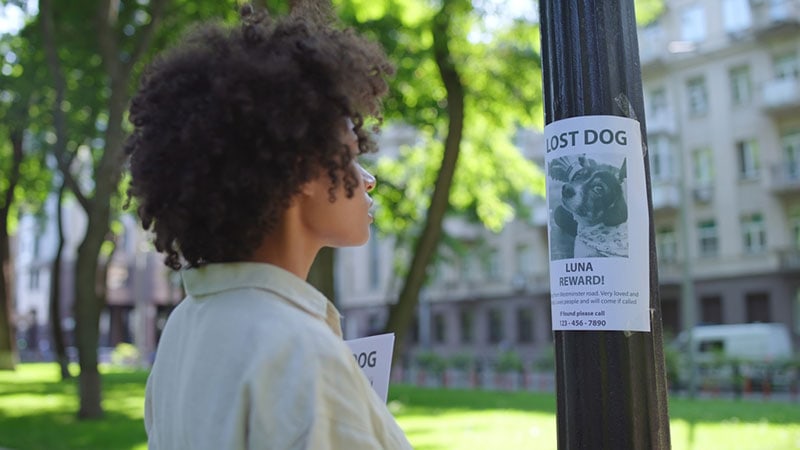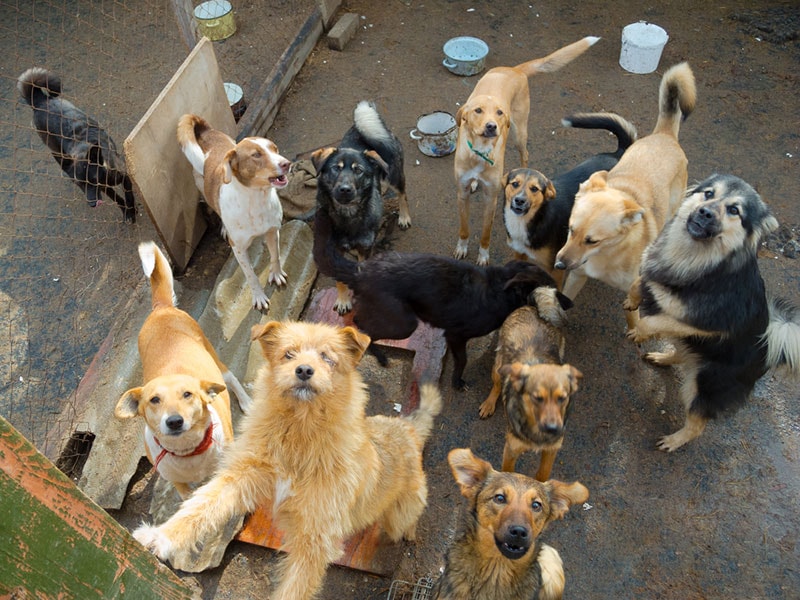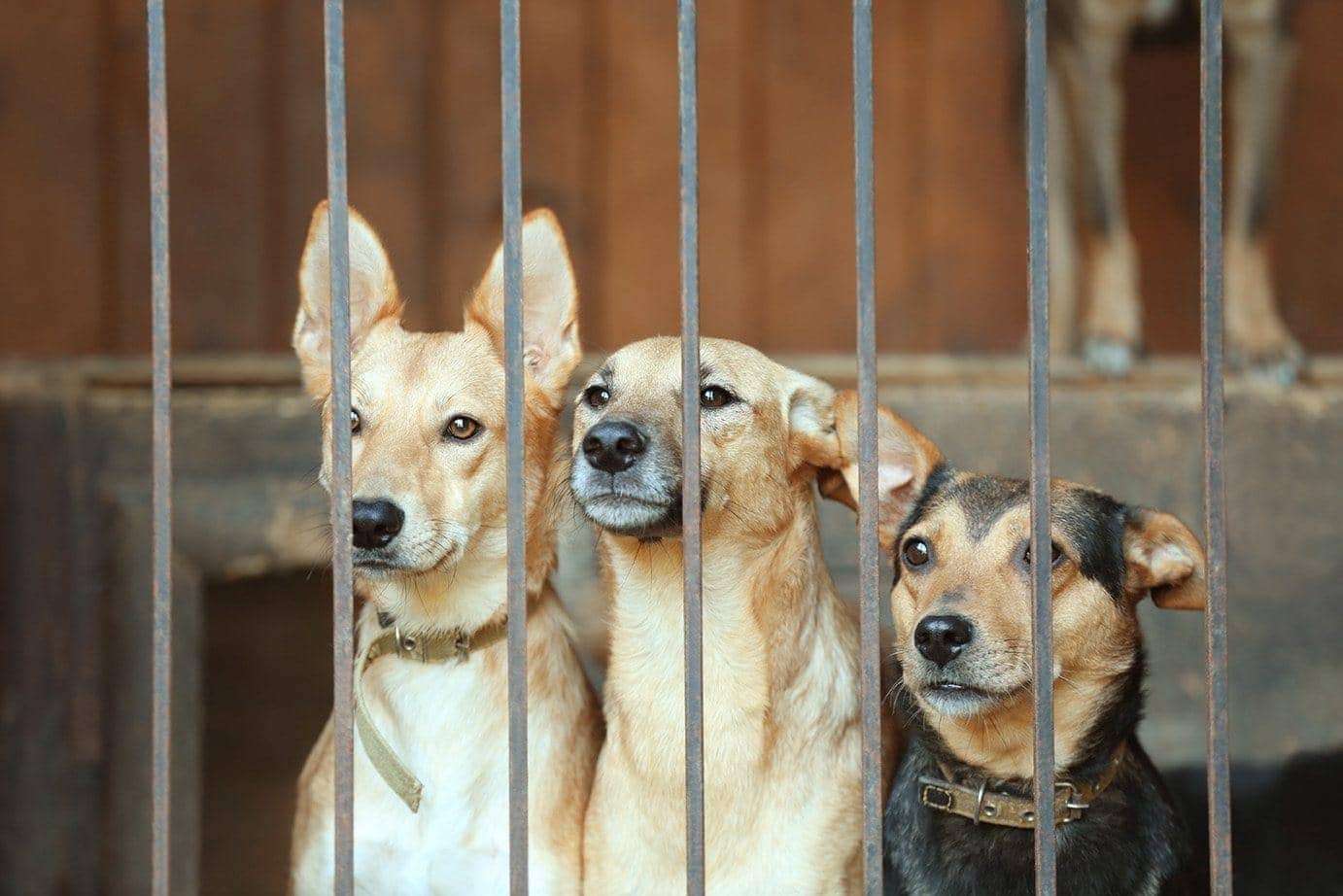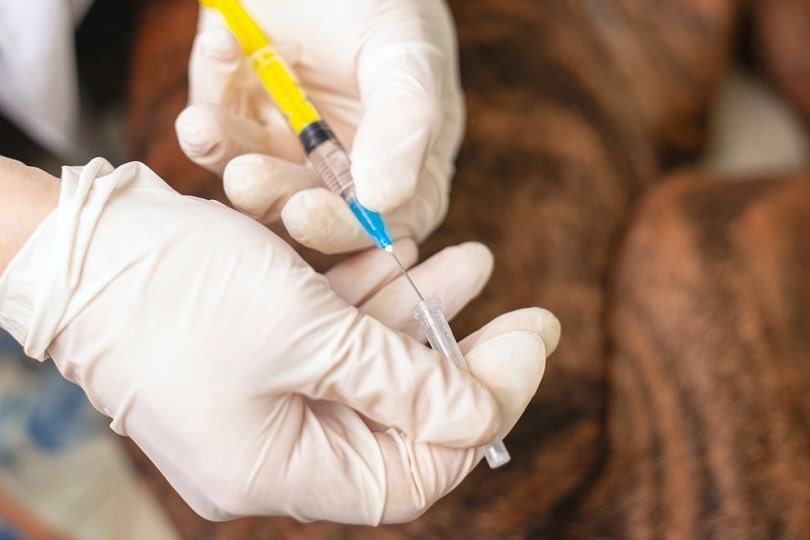How to Find a Lost Dog: 11 Expert Tips & Things You Can Do
Updated on

There are few things more nerve-wracking than your dog going missing. Dogs can get lost in a ton of situations, even dogs that live in the best homes. In fact, even blind, deaf, and mobility-impaired dogs sometimes go missing. Having your dog go missing doesn’t mean you’re a bad pet owner, so instead of beating yourself up, check out the following steps to ensure your dog is found quickly. While it’s obviously best and safest for your dog to be found within minutes or hours of going missing, some dogs are returned home after multiple years of being lost.
To give your dog the best chance of being found quickly and safely if they ever go missing, make sure they are microchipped and wearing a collar with tags. Keep all information with the microchip company and your dog’s collar tag updated with current information. Neutering male dogs can also reduce the risk of them getting lost since neutered males are less likely to roam in search of the neighbor’s in-heat female. If your dog does get lost, here’s everything you should do.
The 11 Expert Tips for Finding Your Lost Dog
1. Stay Calm
The first thing you need to do if your dog goes missing is simply to stay calm. Panicking will only slow the process of searching for your dog. It’s scary to not know where your dog is, but by staying calm, you’ll be able to clearly think through the steps you should take to find your dog. Take some deep breaths and then move forward in the search for your dog. Staying calm will help keep you clear-headed and give you the best shot at finding your pup quickly.

2. Think About Where Your Dog Might Go
If your dog rarely leaves the house or yard, then it might be difficult to come up with places that they might go. If your dog regularly goes on walks in the neighborhood or has escaped before and gone to a specific location, then you may have a good starting point. Search places that are favorites for your dog, especially if they are nearby where your dog escaped from.
Areas with loose cats, chickens, or livestock may be exciting and interesting for your dog, or they may go to a local pool or pond or even to the neighbor who gives them treats sometimes. Make sure to listen carefully as you search. Local animals will often make enough noise to give you a good idea of what direction your dog is headed in.
3. Contact Your Neighbors
After you’ve done a brief initial search, it’s time to let your neighbors know that your dog is missing. Going door to door can be helpful, but if you think you’re hot on your dog’s tail, then stopping to talk to people who are already outside may be even more beneficial.
Make sure to let anyone that you talk to know if your dog is friendly and approachable or standoffish and nervous. Give a clear description of the appearance of your dog, including any collar or accessories they were wearing when they went missing. Provide neighbors with a written copy of your contact information so they can quickly reach out to you if they spot your dog.

4. Contact Local Animal Shelters
Most people who see a loose dog will contact the local animal control office, so there’s a good chance that your dog may get picked up by an animal shelter. Contacting all local animal shelters and providing them with your information and a description of your dog can increase the chance of them calling you as soon as your dog arrives at the shelter. You can also ask them to post the information about your missing dog in the shelter or on their social media pages.
Give any animal shelters or rescues that you contact a very clear description of your dog. Don’t just identify your dog by their breed. Dog breeds can be mistaken, and it’s possible that whoever picks your dog up may think that your American Bully is a Boxer and not think to call you. Describe your dog’s size and build, color, coat length and type, any markings they have, their temperament, and whatever they had on when they went missing.
5. Visit Local Animal Shelters
Contacting local animal shelters is a great early step, but it’s extremely important that you spend time visiting the local animal shelters to look for your dog. It’s not uncommon for dogs to not be identified by description alone, so the shelter may have your dog and not even realize that it’s yours.
There have been many instances in which shelters have euthanized or adopted out people’s pets because the people didn’t visit the shelter in person to identify their pets. In some cases, pets that have been legally adopted out after a set holding period may not be returned to their owners, even if they’re identified as your dog. Always visit shelters in person to lay eyes on the dogs they have picked up. It’s ideal to visit daily until your dog is found.

6. Contact Local Vet Clinics
One of the first places that people take loose dogs that they’ve picked up is to the closest vet clinic. Vet clinics can scan your dog for a microchip, and some clinics may have a holding policy where they can keep loose dogs for a set period before sending them to animal control.
Contact local vet clinics with a clear description of your dog and your contact information. If you can provide them with written information, like a poster or picture with your information on the back, you can ask them to post it. Most vet clinics have a bulletin board that clients can see, and they may even post to their social media page if you ask them to.
7. Make Posters
We’ve all seen missing pet posters taped to light poles and stop signs. Posters are an effective way to get the information about your missing dog out to multiple people quickly. Always check the laws in your area before you start hanging up posters, though. If you hang posters in restricted areas, they are likely to be removed, and you may even be fined.
Posting posters is a great way to find your dog, but make sure you are handing the posters out as well. Give them to mail workers, delivery people, and people who are frequently out and about in your area.

8. Notify Your Dog’s Microchip Company
If your dog is microchipped, then the company that their microchip is through likely has a lost pet system. Contact the microchip company to let them know that your dog is missing so they can work to get your dog home quickly once their chip is scanned. Some microchip companies will create missing posters for you, and some even share missing pet information locally via texts and emails, instantly notifying hundreds or thousands of people about your missing dog.
9. Join Local Lost & Found Groups
There are social media pages for just about everything and lost and found pages pop up in pretty much every community. Some lost and found pages may be pet specific, while others may not be, but posting your dog’s information to as many local lost and found pages as possible will help get the information out quickly. Provide clear photos of your dog with a good description of them to help others identify your dog if they see them.

10. Ask Locals if You Can Search Their Property
During your search, you may come across an area that looks like a place where your dog might hang out. If you see a place on private property that your dog might be hiding in, always check with the property owner to ask permission to search. It can be dangerous to trespass on people’s property, even if you’re just searching for your dog. Some people are extremely wary of strangers poking around their property and lurking in their buildings, so always ask permission. This will help keep you and your dog safe.
11. Repeat These Steps
It may take days or weeks to find your dog, so it’s extremely important that you repeat these steps over and over until you find your dog. Talk to neighbors, keep posters updated, replace weather-worn posters, visit animal shelters and rescues, and search your dog’s favorite haunts. Also, if you have any reason to believe that your dog has been stolen, contact your local police department to see if they have any resources to help you find your dog.

Conclusion
Searching for a missing dog can be extremely stressful, but there are multiple steps you can take to have the greatest success in finding your dog. Stay calm, and even though you’re stressed, make sure you’re kind and respectful to strangers and neighbors you interact with in searching for your dog. This will make people more likely to be willing to help you.
You Might Also Be Interested In:
Featured Image Credit: SynthEx, Shutterstock












